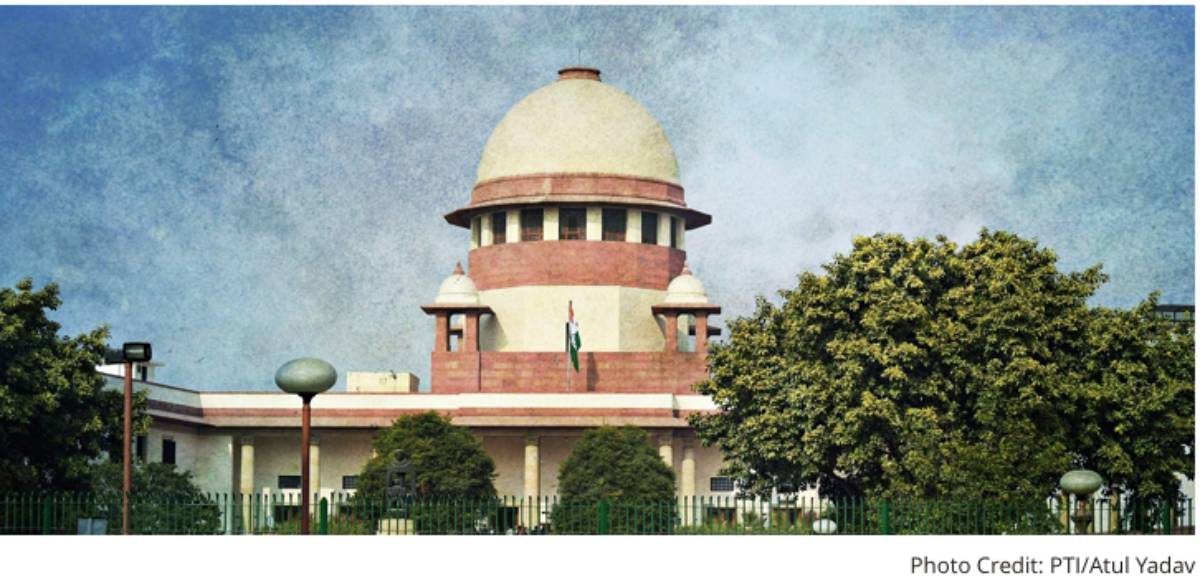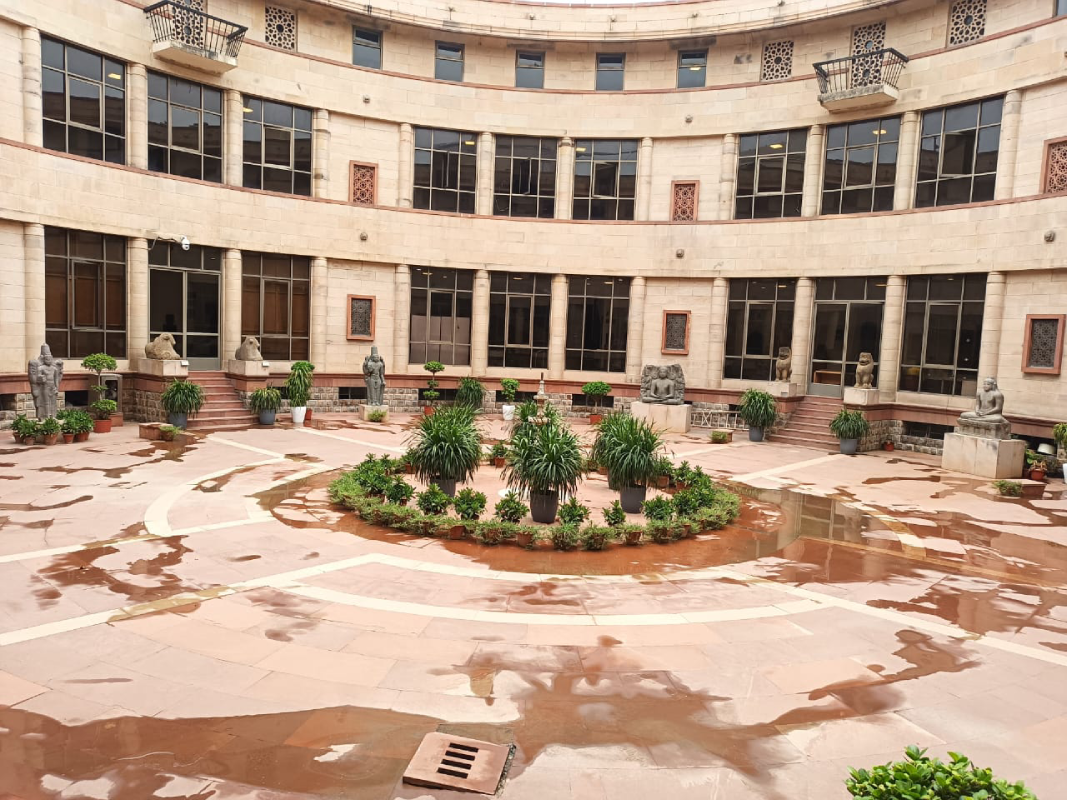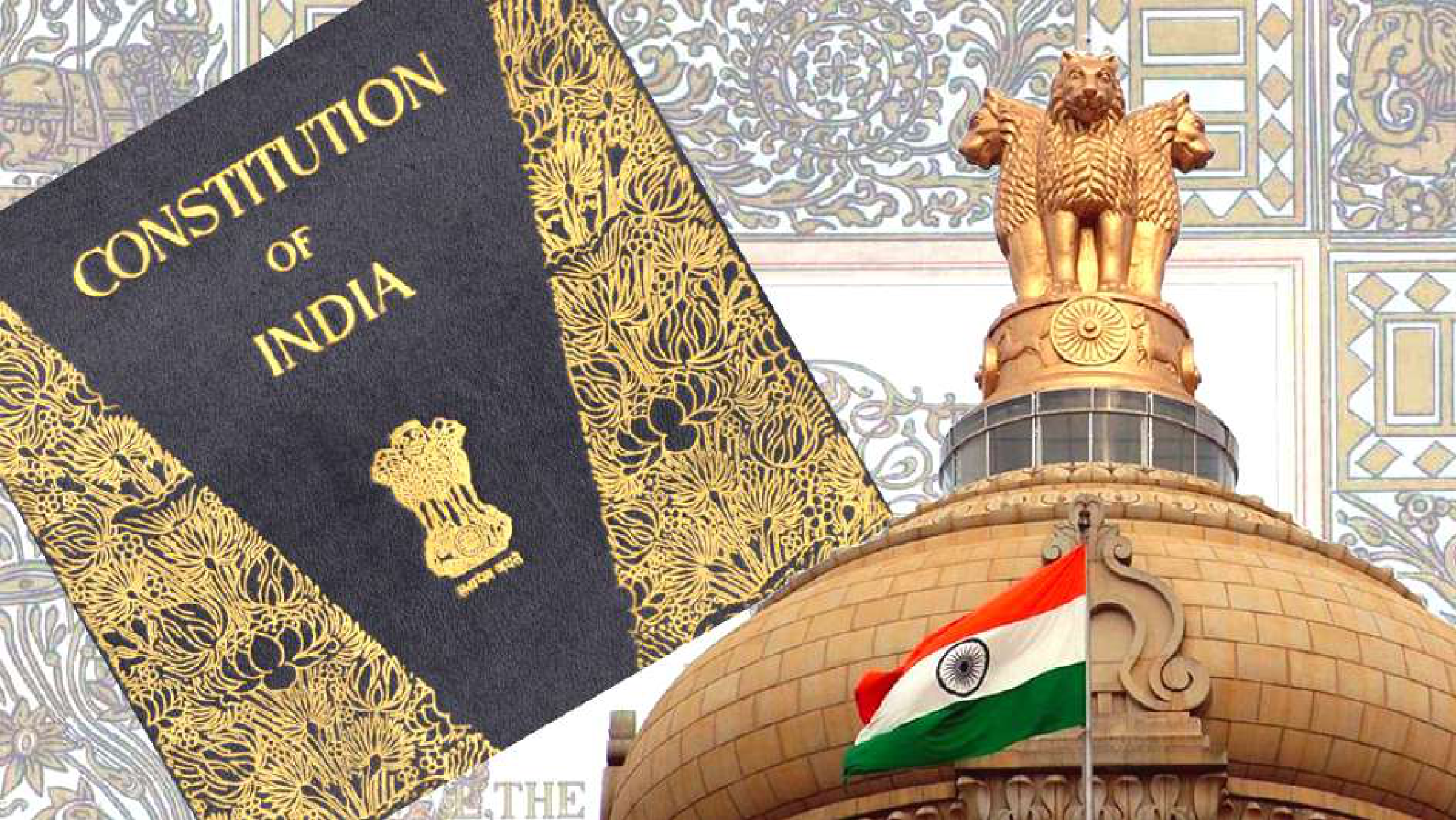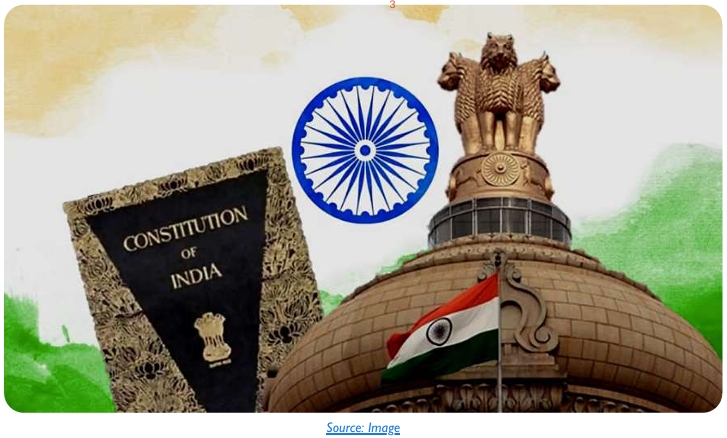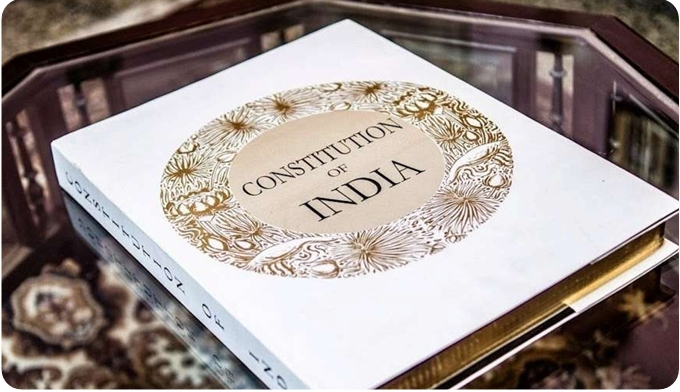In drafting of the Indian Constitution, the primary concern was to safeguard the freedom and rights of people that were diverse in every imaginable way- religion, class, caste and region. The Preamble of the Constitution, which lays down the values of JUSTICE, social, economic and political; LIBERTY of thought, expression, belief, faith and worship; EQUALITY of status and of opportunity; and to promote among them all and FRATERNITY assuring the dignity of the individual and the unity and integrity of the Nation; was based on the Objectives which was drafted and moved in the Constituent Assembly by Jawaharlal Nehru on 13 December 1946. Dr B. R. Ambedkar said about the preamble:
“It was, indeed, a way of life, which recognizes liberty, equality, and fraternity as the principles of life and which cannot be divorced from each other: Liberty cannot be divorced from equality; equality cannot be divorced from liberty. Nor can liberty and equality be divorced from fraternity. Without equality, liberty would produce the supremacy of the few over the many. Equality without liberty would kill individual initiative. Without fraternity, liberty and equality could not become a natural course of things.”
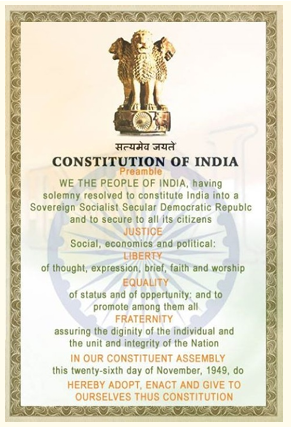
Of the total eleven sessions held by the Constituent Assembly between 1946 and 1949, the first six sessions were devoted to – religious and cultural freedom, fundamentals rights, the scheduled tribes, and the powers of the Union and its relationship with the states. These along with the directive principles form the core of our Constitution and it is this core that is in crisis today. It cannot be denied that caste and religion based violence have been witnessed in the past. However, the last few years has seen an unprecedented surge in communal and caste violence. Moreover, institutions meant to safeguard democracy have also been under attack. Through this article we wish to bring into focus issues and events that violate constitutional values and democratic institutions establish to uphold those values. We will be focussing on three institutions – two with a Constitutional status and the third being an important building block of a democratic polity – that are central to upholding constitutional values and democratic institutions –the Judiciary, the Election Commission and Higher Educational Institutions.
Judiciary
The Constitution ensures that the judiciary remains free from the influence and pressures of the executive and the legislature so as to ensure that access to justice for all. However the courts have been plagued with the, pitfalls of the collegium system, the issue of shortage of judges leading to pendency of cases and delays in justice. While these cannot be attributed to a particular government as it has been building up over years, however, in the past few years, matters have escalated. There have been several instances of direct conflict of the State and the Judiciary which do not augur well for a democracy.
a) Conflict with regard to appointment of Judges: It started in 2014 with the Government sending back Gopal Subramanium’s name to the collegium as Supreme Court judge citing a CBI case against him. As a mark of protest, Subramanium tendered his resignation and also accused the government of orchestrating a malicious campaign against him for his role as the Supreme Court’s amicus curiae in Sohrabuddin fake encounter case. The then Chief Justice RM Lodha publicly expressed his dissatisfaction with government’s conduct.
In the years 2015-2016, other points of conflict emerged between the Executive and the Judiciary when the Supreme Court struck down the National Judicial Appointments Commission Act, 2014 which gave the Executive the final say in the appointment of judges, as unconstitutional in Oct 2015. The Supreme Court collegium rejected in 2016 the Centre’s draft of Memorandum of Procedure containing provisions that enabled the central government to reject the candidate nominated by the collegium on the grounds of ‘national security’. The collegium had to finally concede to government’s demand in 2017 to end the stand-off with the government.
b) Inaction on Judicial Vacancies: The Economic Survey 2018-19 flags the huge pending cases and the urgent need to fill in vacancies in order to tackle pendency of cases. As per the Economic Survey, more than 8500 judges are required to clear the backlog. It says additional 8 judges will be required in Supreme Court in the next 5 years. Across high courts, a total of 43,63,260 cases were pending as on July 1, according to the National Judicial Data Grid (NJDG). Of the total cases, 27.42 lakh have been pending for more than one year, while 8.43 lakh cases are 5-10 years old, 6.86 lakh cases are 10-20 years old, and 1.04 lakh are 20-30 years old. A total of 44,409 cases have been pending for more than 30 years!
While one may argue that the judicial delays have not crept up only in the last five years, but the point to be noted is that Chief Justice TS Thakur appealed to the government to expedite the process of judges’ appointment. But no action was taken on this. Additionally the CJI wrote to the Prime Minister on June 22, 2019 to increase the number of Supreme Court Judges and to increase of the retirement age to 65 years. He urged the Prime Minister to make tenure appointment of retire Judges under Art 128 and 224 A to clear the backlog of pending cases. However nothing has been done so far.
Matters came to a head when senior most judges addressed a press conference against the stance of the government with regard to the judiciary. Justice Chelameswar and Justice Kurian Joseph in their public letters issued in the chief justice in March and April 2018 directly accused the government of interference. Justice Joseph writing on the matter of government delay of Justice KM Joseph’s name went to the extent of saying that the “existence of the Supreme Court is under threat”
Cases of issue based rift between state institutions and government have occurred in the past, but the scale of the crises at present is clearly unprecedented. Three Chief Justices and multiple Supreme Court judges have called out government for interfering in its working in last three years. The Supreme Court bench that struck down the NJAC in 2015 itself has been introspective about the existing collegium system and even invited the Government to work collaboratively towards improving it. The collegiums system in judicial appointment as devised to safeguard for judicial independence from the executive and therefore, government tendencies to control the appointments go against the separation of power doctrine. Similarly, repeated questioning and criticism of judicial verdicts and working by government representatives harms the credibility of the institution amongst the citizens.
Election Commission
Free and fair elections are crucial in a democratic country and when the Election Commission comes under the scanner for its role in an election it is a matter of grave concern. The signs of the Election Commission being biased in its decision regarding elections were apparent when in 2017 it decided to split the elections in Himachal Pradesh (HP) and Gujarat while it was expected to hold simultaneous elections in both the states. The decision, it was alleged was made to favour the ruling party. The voting in HP was held on 9 Nov and result were stalled for as long as 18 December 2017, a gap of total 40 days. In 2018, the Delhi High Court had criticised the Election Commission for violating the principles of natural justice and dismissing 20 AAP MLAs without holding oral hearings. It restored their membership and asked the commission to give the legislators to present their side. In the election of 2019, the Election Commission was seen as favouring a particular party in deciding the poll phases, holding road shows, content of speeches. We cite some examples here to elucidate our point.
In April, 2019, it was reported the government think tank Niti Aayog had asked bureaucrats in Union territories and at least one BJP-ruled state to send the Prime Minister’s Office inputs on local area knowledge ahead of the leader’s visits to the place. It asked the bureaucrats to prepare a write-up for the Prime Minister’s office on the highlights and important features of the UTs – historical, local heroes, culture, religious, economic (including details of major crops, industry etc). The Congress moved the EC against the alleged misuse of state machinery by the Prime Minister’s office for election campaign. No heed was paid to it.
Two sets of letters were written during and post the election. Both letters written by civil servants raised certain common issues on misuse of government machinery, violation of code of conduct by the Prime Minister, bias in taking action. In the first instance, a group of 66 former civil servants wrote to President Ramnath Kovind, calling the Election Commission’s conduct in question, regarding the following:
a) Model Code of Conduct: The letter cited Uttar Pradesh CM Adityanath Speeches and Namo TV as clear cut violation and Election Commission’s failure to act on the same. Not only did the Namo channel continue to be telecasted, it was also immediately taken off post elections. There has been no enquiry regarding this. They also cited Narendra Modi’s A-SAT speech. The letter pointed out the gross violation of election code of conduct with the Prime Minister parading achievements of the government. They wrote, “tantamount to a serious breach of propriety and amounts to giving unfair publicity to the party presently in government and the ECI’s decision did not stand up to the standards of impartiality expected of it”.
Furthermore, the Election Commission refused to share the details of alleged model code of conduct violations by Prime Minister Modi and other political leaders during general elections in response to an RTI query. The body cited section 7(9) of RTI Act, saying compilations of all the information will lead to disproportionate diversion of the resources. In yet another example of partisan behaviour, the Election Commission dismissed the Opposition’s complaint against the Prime Minister’s road show in Ahmadabad while the second phase voting was going on. On the other hand, EC sought an explanation from the congress president for his interview before second phase of voting. EC had given clean chit to PM total six times including for his speeches where he invoked Pulwama and Balakot.
b) Differential Action/Inaction towards Government officials: The letter also noted the Election Commission’s differential attitude towards Government officials on election duty. The ECI passed orders transferring three top police officers and the chief secretary in Andhra Pradesh and four top police officers in West Bengal, it did not take any such step in Tamil Nadu, where the present Director General of Police (DGP) is reportedly under investigation for Gutkha Scam case and there had been repeated appeals by the opposition parties in Tamil Nadu, seeking his removal from the post. He was also on extension beyond the normal date of superannuation and as per ECI norms, such officers should not be assigned election duties.
c) Curb of dissent within the ECI: During the elections, the Election Commission tried to curb dissent within the institution. It refused to disclose the dissent note of Election Commissioner Mr Ashok Lavasa under the RTI Act on decisions pertaining to Prime Minister Narendra Modi’s
speeches which were alleged to have violated the model code of conduct. The Commission in its response said that it was exempted from providing information which may “endanger the life or physical safety” of an individual. Election Commissioner Ashok Lavasa, was sidelined and he said the minority decisions were going unrecorded and were being left out of the final decisions which are “contrary to well established conventions of multi member statutory bodies”. Lavasa had opposed five clearances given by the EC to PM Modi and BJP President Amit Shah in complaints of Model Code of Conduct violations.
Post the elections, apart from concerned civil society members, over 60 civil servants wrote to the Election Commissioner of India (ECI) saying that 2019 Lok Sabha elections were among the “least free and fair elections” in three decades. The letter pointed out the several instances which exposed the bias of the ECI:
- Delay in such as delaying the announcement of the election dates as late as 10 March, deliberately allowing the PM to complete the inauguration of projects right before the elections. He inaugurated a total of 157 projects between the months of February to March barely a few months before the election.
- Allocation of Election Phases: A second important point made by the letter was the allocation of election phase; where the ruling party was weak, elections were held in a single phase, whereas where it was facing tough competition or was likely to gain seats, the polling was held in several phases.
- Use of official machinery: The signatories questioned the EC’s decision to exonerate the government of charges of misusing official machinery during campaigns. As pointed out earlier the Niti Aayog supplied data and information to plan out campaign and speeches.
- Media Bias: No efforts were made to curb the use of media with regard to extensive coverage to every movement of the Prime Minister plus the airing of Na Mo Television which appeared and disappeared literally overnight
“So blatant have been the acts of omission and commission by the ECI that even former Elections Commissioners and CECs have been compelled, albeit reluctantly, to question the decisions of their successors in office.”
Apart from the series of inaction against the electoral transgressions by those in office in the current government the Election Commission also reversed its opinion of electoral bonds. Initially the EC called the move a step back, only to change its mind later and endorse the policy instrument. The Commission again changed its stance in 2019 when it told the Supreme Court that electoral bond hit transparency in political funding.
Higher Education Institutions
The State and educational institutions have been at logger heads for decades now on several issues- appointments, recruitment, admission, syllabi and also at times the naming of the universities as when a panel constituted by the University Grants Commission (UGC) suggested dropping the words Hindu and Muslim, respectively in the Banaras Hindu University and Aligarh Muslim University names.
Batabyal (2014) maps out both the conflicts that have taken place in establishing centres of higher education in India since 1960’s. He points out how students and administration have been instigated into violence by the state inciting people on communal lines. But in the last few years, there has been a sharp increase in the instances of violence in Universities and also curbing of freedom of speech not confined to one university but occurring in several across the country.
We list a few of these instances to give an overview of how educational institutes and academic freedom has been repeatedly come under attack. In 2016, Prof. Vivek Kumar, a sociologist was attacked during a talk in Bal Bhawan, Gwalior by members of Bhartiya Janta Yuva Morcha calling his speech “provocative and anti-national”. In February 2017, an event called “Culture of Dissent” organised by the students of Ramjas college of Delhi University was violently attacked by ABVP members. The attack was met with large scale protest march by Delhi University students. In the same month Rajshree Ranawat, a faculty member in Jodhpur University was suspended for organising a lecture by Prof. Nivedita Menon. A police complaint was lodged against Menon as well as Ranawat.
In September 2017, a talk by Prof. Nandini Sundar, Adhik Kadam and K Stalin was cancelled at IIT Madras. The university administration deemed the talk “controversial and unsuitable”. In yet another incident, Sanjay Kumar, a professor of Sociology in Mahatma Gandhi Central University at Motihari town in Bihar was assaulted for a comment he made on Facebook on the demise of former PM Atal Bihari Vajpayee. In July 2018, a programme “Dialogue on Freedom of Expression” was cancelled in Delhi University after ABVP members threatened to disrupt it. In December 2018, ABVP members attacked a book stall of Hariti publication, for publishing and selling a book titled ‘JNU Diaries’ in the campus of Savitri Bhai Phule Pune University.
Apart from this there have been several other cases of professors being attacked and assaulted for speaking up against the government, the suicide of Rohit Vemula also points to the apathy of the government towards students, especially those belonging to the marginal sections of the society. One of the most prominent cases is that of JNU where a students’ union meeting was taken out of context and students were accused of sedition and put behind bars. Inspite of it being proved that the video doing the rounds was doctored, the deed was done and a wave of anti-JNU sentiment emerged questioning it being funded by tax payers.
As Gudavarthy (2019) points out in his work, these occurrences are symptomatic of the Government’s attitude towards higher education and the idea of a university itself. Universities are set up to encourage freedom to think and question, the current government is against this and wants to instead promote a false notion of nationalism among students creating a narrow and sectarian understanding of education. This is believes is part of a larger design to stifle public university and encourage privatisation of universities.
Fundamental Rights articulated from Article 14 to Article 21 form the core of our Constitution. All the examples quotes above are a direct attack on the fundamental rights of citizens. Historically governments over the years have invoked various provisions to curtail unfavourable opinion ranging from sedition to defamation. The Government has repeatedly provided patronage to ideologically affiliated groups and elements like ABVP and Karni Sena as they used violent methods to attack those who do not subscribe to the ruling regime and ideology. This is evident from the constant attacks on writers, academics and journalists as the perpetrators enjoy impunity. Students, journalists, academics, institutions are maligned and discredited and are framed as a threat to the nation. This attitude undermines democracy and the ideals on which the constitution grants us freedom.
Conclusion
It cannot be denied that the institutions which are essential for a healthy democracy are under threat today in India. We have cited examples of violation of constitutional values in three institutions. But, others like the Reserve Bank of India, Media, Art and cultural institutions have also witnessed increased state interference in their functioning. The media does not provide a level playing field to the opposition. It doesn’t carry the voice of the opposition to the people and has become a propaganda machine for the current government. Last and not the least- film makers, authors and the press are being stifled.
Any commentary against the government is followed by violence by fringe elements or action is taken by the government – this is being done by both State and Central Governments. The assassination of Dabholkar, Pansare, Kalburgi and Gauri Lankesh, point to the intolerant times we live in where anyone who speaks against certain belief systems, or the policies of the government is attacked in the most brutal manner. As citizens we cannot ignore these developments that are slowly eroding the pillars of democracy and moving us towards a totalitarian state. We need to be vigilant and raise our voice against the dilution of our constitutional values and erosion of our democratic institutions.
Acknowledgement: The author is grateful for research assistance provided for this article by Mr Piyush Kumar, Junior Policy Associate, RGICS.
References:
Batabyal, Rakesh, (2014), JNU: The Making of a University, Harper Collins India Gudavarthy, Ajay ( 2019), India after Modi, Bloomsburg Publications, India https://thewire.in/politics/elections-2019-among-least-free-and-fair-in-three-decades-ex officials-write-to-ec https://thewire.in/government/ashok-lavasa-dissent-note-endanger-life-ecmcc
https://scroll.in/latest/926590/ec-refuses-to-disclose-details-of-alleged-poll-code-violations bynarendra-modi-and-other-leaders
https://scroll.in/latest/923910/ashok-lavasa-says-he-wont-attend-ec-poll-code-meetings-sincedissent-is-not-being-noted-reports
https://scroll.in/article/919512/model-code-collectors-being-asked-to-send-pmo-localinformation-ahead-of-modi-visits-email-shows
https://scroll.in/latest/919409/former-civil-servants-write-to-president-on-electioncommissions-weak-kneed-responses
https://scroll.in/article/853890/why-did-the-election-commission-announce-polling-dates-foronly-himachal-and-not-gujarat
https://www.hindustantimes.com/india-news/gujarat-election-results-on-monday-here-are10-controversies-that-rocked-the-state/story-r2RJbw4keilYW53OU4ZpbO.html
https://economictimes.indiatimes.com/news/politics-and-nation/delhi-high-court-restoresmembership-of-20-disqualified-aap-mlas/articleshow/63428390.cms
https://www.thehindu.com/news/national/electoral-bonds-hit-transparency-in-politicalfunding-says-election-commission/article26656311.ece
https://www.news18.com/news/india/economic-survey-flags-ballooning-pile-of-pendingcases-says-8500-judges-needed-to-clear-backlog-2216877.html
https://www.news18.com/videos/ivideos/news18-explains-dissent-within-judiciary-overcollegium-recommendations-in-judicial-appointments-2004715.html
https://www.thehindu.com/opinion/editorial/for-a-full-bench/article27097489.ece
https://www.indiatoday.in/india/story/higher-judiciary-is-losing-its-aura-and-majesty-says-cjiranjan-gogoi-1399100-2018-11-29
https://www.thehindubusinessline.com/news/cji-writes-to-pm-seeks-increase-in-number-ofsupreme-court-judges/article28110035.ece
https://indianexpress.com/article/india/supreme-court-expresses-concern-over-vacancies-inlower-judiciary-5413588/
https://timesofindia.indiatimes.com/india/sc-irked-over-judicial-impropriety-raps-seniorlawyers-for-playing-fraud/articleshow/70093573.cms

